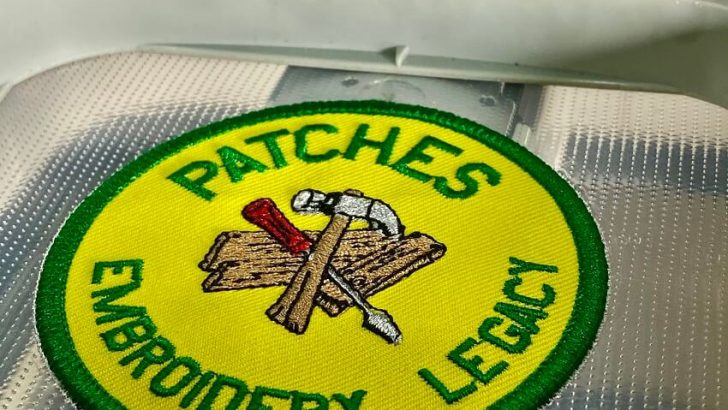Machine embroidered patches have become a staple in the world of custom apparel, from military uniforms to fashion-forward streetwear. These intricate designs are not just decorative; they represent a blend of artistry and technology that has evolved significantly over the years. Whether you’re looking to personalize your gear or create a unique brand identity, understanding the process behind machine embroidered patches is essential. This guide will explore everything from design considerations to the craftsmanship involved, helping you make informed decisions when commissioning or creating your own.
The Evolution of Machine Embroidery
The history of embroidery dates back centuries, with hand-stitched designs being a hallmark of traditional craftsmanship. However, the advent of machine embroidery in the late 19th century revolutionized the industry. Early machines were rudimentary, but as technology advanced, so did the precision and complexity of the designs. Today, computerized embroidery machines can produce highly detailed patterns with remarkable accuracy, making it possible to create intricate logos, monograms, and artistic elements with ease.
This technological advancement has made machine embroidered patches more accessible than ever before. From small-scale custom orders to large production runs, the versatility of machine embroidery allows for a wide range of applications. The ability to replicate designs consistently ensures that each patch maintains the same quality and detail, which is crucial for branding and uniformity.
Design Considerations for Custom Patches
When it comes to designing a machine embroidered patch, several factors must be taken into account to ensure the final product meets your expectations. First and foremost is the choice of design elements. Simple shapes and bold lines tend to translate well into embroidery, while fine details may require additional consideration. For example, intricate patterns or small text might need to be simplified or adjusted to accommodate the limitations of the embroidery process.
Another important factor is the color palette. While machine embroidery can handle multiple colors, the number of colors used can affect the overall cost and complexity of the design. It’s also worth noting that certain colors may not appear as vibrant on fabric as they do on digital screens, so it’s advisable to request samples or use color swatches to get a better sense of how the final product will look.
Materials and Construction
The materials used in the construction of a machine embroidered patch play a significant role in its durability and appearance. The most common backing material is a woven or felt base, which provides stability and support for the embroidered design. However, some patches may use a plastic or vinyl backing for added waterproofing or rigidity, depending on the intended use.
Thread selection is another critical aspect of the process. High-quality threads, such as polyester or rayon, are often preferred for their strength and vibrancy. The type of thread used can also affect the texture and feel of the patch, so it’s important to choose materials that complement the design and the fabric it will be applied to.
Quality Craftsmanship in Machine Embroidery
While technology plays a vital role in the creation of machine embroidered patches, the skill and attention to detail of the embroiderer are equally important. A well-crafted patch should not only look good but also withstand regular wear and tear. This means that the stitching must be tight and even, with no loose threads or gaps in the design.
Quality control is an essential part of the process, and reputable manufacturers often have strict guidelines to ensure consistency. This includes checking for color accuracy, stitch density, and overall finish. When working with a supplier, it’s wise to ask about their quality assurance processes and request samples to evaluate the workmanship firsthand.
Applications and Uses of Machine Embroidered Patches
Machine embroidered patches are incredibly versatile and can be found in a variety of settings. In the military and law enforcement sectors, they are used to denote rank, unit, or affiliation. In the fashion industry, they serve as a statement piece, adding a touch of personality to jackets, bags, and accessories. Businesses also use them for branding, whether on employee uniforms, promotional items, or merchandise.
For individuals, custom embroidered patches offer a way to express personal style or commemorate special events. Whether it’s a sports team logo, a family crest, or a unique artwork, the possibilities are endless. The key is to find a balance between creativity and practicality, ensuring that the design is both visually appealing and functional.
Choosing the Right Supplier
Selecting the right supplier is crucial when it comes to getting high-quality machine embroidered patches. Look for companies with a proven track record, positive customer reviews, and a portfolio of past work. Many suppliers offer online design tools that allow you to visualize your patch before it’s produced, which can be a valuable resource.
It’s also important to consider the turnaround time and pricing structure. While cheaper options may seem appealing, they often come with compromises in quality and service. Investing in a reputable supplier may cost more upfront, but it can save you time and money in the long run by ensuring a reliable and professional result.
